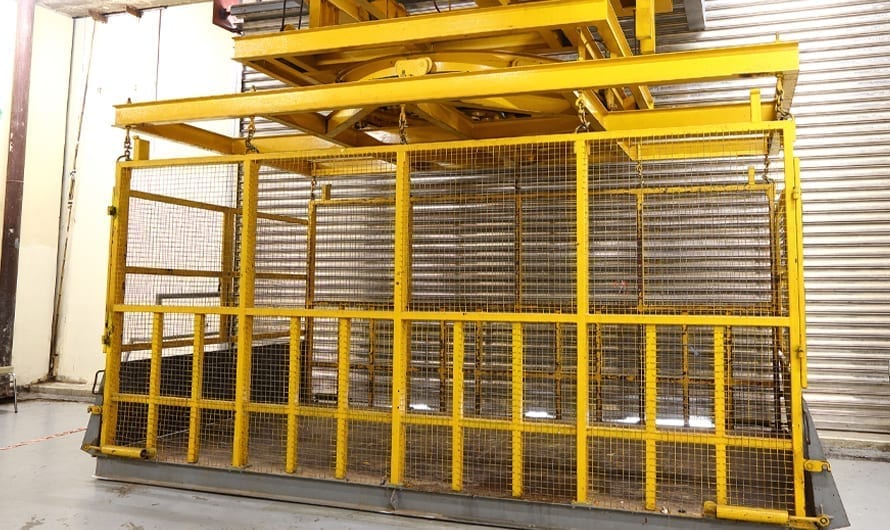
Whether you’re revamping a few floors or installing electrical systems for an entire building, working as an electrical contractor in a high-rise building can be complicated.
The job itself isn’t the problem. Your crew already knows and excels at their work.
The biggest challenge with downtown construction is getting materials to your job site. Traffic, tight spaces and tall buildings turn an ordinary task into a complex logistics puzzle.
Material handling may not seem like an important issue, but it directly affects your bottom line.
If your materials aren’t in the right place at the right time, your crew can’t complete their work.
The challenges of high-rise construction can be conquered. By learning the main obstacles and planning to avoid them, you can avoid costly delays and boost efficiency.
Challenge #1: Loading dock congestion
The first challenge you’ll face when working on a high-rise is loading dock congestion.
As an electrical contractor, you’re often vying for space with mechanical, plumbing, drywall and other trades. If you’re upfitting a large commercial building, you’re also competing for space and time with the building’s occupants.
When you consider how many people will be receiving deliveries at the job site, it’s not hard to see how loading dock schedules can fill up quickly.
The problem is complicated by the fact that high-rise buildings are often surrounded by narrow, one-way streets. These conditions leave little room for trucks to wait in line for a loading dock or park outside.
And if the truck can’t dock, you can’t receive your materials. Loading dock delays add up, slowing down your progress.
Solution: Schedule deliveries in advance
Planning ahead is the best way to tackle loading dock challenges. The earlier you can secure a time slot at the loading dock, the better.
Loading dock managers prefer if you can schedule deliveries about one week in advance. While meeting that timeline may seem impossible, it will improve your overall efficiency and help you reduce costs.
Think about materials you routinely need and arrange for them to be delivered at regular times. If you discover you need a special component, it can travel along with the order that’s already scheduled to be delivered.
If you can’t schedule that far in advance, choose an off-peak time that won’t be affected by rush hour traffic.
Challenge #2: Only one elevator
When you’re working on a high-rise with dozens of floors, knowing what elevators are available to you is crucial. Outside of loading docks, elevators are one of the biggest choke points for traffic flow.
Unfortunately, many job sites operate with a single freight elevator. Since all the other tradespeople need to use it to transport materials, too, the elevator can become busy very quickly.
With worker productivity closely connected to profitability, time spent waiting for an empty elevator can be costly.

Solution: Limit elevator travel
In a one-elevator building, you can save a lot of time by decreasing how often your crew travels between floors to get materials.
A distributor like Border States can break down your materials into separate job boxes for each floor. This gives your electricians everything they need to complete their jobs without having to go back and forth from a central materials area.
Better yet, your distributor can regularly replenish those job boxes for you at night. This solves your elevator traffic problem, and it makes loading dock scheduling easier.
Challenge #3: Small elevators
Even if you have access to an elevator, its size may be less than ideal.
For instance, not all job sites have a freight elevator. While you can make do with a passenger or service elevator, they tend to be smaller. You also need to watch out for weight limits.
If the elevator size is less than 10 feet, you may have trouble fitting cable tray and other larger materials inside.
Imagine how frustrating it would be if you’re ready to install cable tray on the 18th floor, but your material is stuck on the first.
Solution: Plan ahead
The best way to minimize elevator size issues is to plan for them. As soon as you can, measure the size of the elevator and check its weight requirements.
Then, let your distributor know the limitations you’re working with. They’ll be able to help you identify any materials that will be difficult to fit inside.
If you plan ahead, your distributor can package or kit materials in the most convenient size before they arrive at your job site. For example, transporting conduit bundles on tilt conduit carts makes it easier to fit them into tight spaces like elevators.
Challenge #4: No elevators
Of course, any elevator is better than no elevator. If the elevator is nonoperational or nonexistent, you’ll need to carry materials up the stairs.
Unfortunately, there’s no easy or fast way to do this. The higher up you’re working in the building, the more time and labor you’ll need to get material up the stairs.
Solution: Outsource material hauling
If you know you won’t have an elevator, consider outsourcing the labor needed to haul materials up dozens of flights of stairs.
Your electricians’ time is valuable and better spent doing their work than moving material around. If you’re already working with a distributor to deliver materials, find out if you can arrange for them to carry the load up the stairs, too.
If the elevator on your job site breaks, contact your distributor as soon as possible to find a solution and ensure timely delivery of materials.
Challenge #5: Night work schedules
Night work is the norm for many high-rise construction sites. Project owners and general contractors often schedule you to work when pedestrian and car traffic calms down.
This is especially true when you’re upfitting an existing building with new electrical systems or relighting it with LED lights. If you’re working on three floors of a 30-story building and the other 27 floors are occupied, you’ll likely get scheduled at night to avoid disturbances.
The challenge, of course, is that most businesses are closed at night — including your distributor or local supply store.
Solution: Schedule night deliveries
The best solution here is to find a distributor who can deliver materials during the second or third shift.
This way, you’ll be on the job site when materials arrive, and you won’t disrupt the building’s normal schedule. Night deliveries can also help with loading dock and elevator congestion issues.
Challenge #6: Limited space to lay out materials
Finally, working on a high-rise means you’ll have limited floor space to prepare your materials.
Everything needs to happen inside of the building, as street space is limited. And since you’re likely not the only one working on the job site, you’ll be sharing space with other tradesmen.
Solution: Try prefab solutions
Prefabrication can save you a ton of time on any job site, but it’s especially helpful for construction in downtown, metro areas.
With prefab, you can have your materials assembled in a controlled environment, away from the unique challenges of a high-rise building.
Solve your material handling challenges
The common theme across all these challenges is that it’s better not to tackle a high-rise construction project alone.
A distributor with material management expertise can help you overcome material handling obstacles. Together, you can form a plan for dealing with choke points and working around issues as they inevitably arise.
By anticipating logistical delays before they happen, you’ll cut costs and complete more projects on schedule.